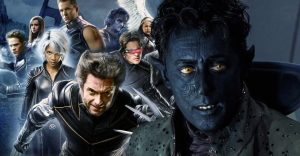How Buried Was Shot Entirely Inside A Coffin

Besides a piercing sense of hopelessness and the urge to exit the room for a breath of fresh air, 2010’s Buried also leaves the question of how the movie was shot exclusively inside a coffin. Some films are terrifying because they depict the human being’s deepest fears of the paranormal, like haunted houses and possessed dolls; others because they show the worst of people, like serial killers and torture addicts. But few films manage to disturb the audience more than any evil entity could with only the thought of an excruciating yet goreless death. Such is the case of Buried, a blood-curling film with a concept as interesting as its behind-the-scenes.
After being ambushed by terrorists, American truck driver Paul Conroy (Ryan Reynolds) wakes up inside a coffin entombed in an unknown area of Iraq. With only a dying cellphone, a Zippo lighter, and a limited supply of oxygen, he must find a way to call for help and get out as quickly as possible. To make matters worse, his kidnapper calls him to demand a huge ransom and threaten his family, while the authorities he contacts only serve to waste his phone’s battery and his oxygen. Things go as well as anybody would expect in such a situation and—just like the camera throughout the whole film—Paul never makes it out of the coffin.
Paul Conroy is the only character shown throughout the 95 minutes of the movie’s runtime, yet what could have turned into a monotonous movie actually became a nerve-wracking experience. The decision to never leave Paul’s side in the only location of the movie is what perfectly embodies the feeling of confinement, but it also presented a production challenge for the filmmakers. Unearthing Buried, a making-of video featured in the home release of the movie, provides an interesting look at many of the tricks employed to achieve the feat.
They Built Seven Different Coffins To Shoot Buried

Few movies depend on their setting as much as Buried. The film does a great job of establishing the constricted dimensions of the box where Paul Conroy is trapped, as he barely has any space to move his head, let alone get enough impulse to punch his way out like The Bride did in Kill Bill Vol. 2. One of the curious details that start to emerge as the story unfolds is that the movie rarely uses the same shot twice, with every new cut revealing the six walls of the coffin at a different distance and from a different angle. This wouldn’t be possible to film with a regular coffin, so the crew built seven different versions of it, each with different purposes.
The most commonly used one was called “The Joker” since its versatility was their wildcard. It had removable walls that let them shoot from one angle at a time, isolated for optimal sound recording and equipped with a reinforced frame to withstand Ryan Reynolds’ hits. It was lifted at around 35 inches from the ground so the crew could work comfortably with a correctly-leveled camera. Another version of the coffin was “The Tunnel”, a longer design built specifically for perspective effects and intricate angles. “The Wall”, as the name suggests, had lofty walls on either side to amplify the vertical depth of the coffin, which accentuated the movie’s theme of isolation.
“The 360” design was particularly complex; it had easily-removable walls that helped the crew shoot long rotating takes around the entire coffin while taking each wall in and out of the shot, thus creating the illusion that the camera could see through the walls and giving the environment an almost tangible sense of realism. They also used two separate halves to shoot extreme close-ups without Ryan Reynolds inside. The making-of video doesn’t elaborate on the remaining two, but they certainly had similar purposes.
Ryan Reynolds Went Through Hell While Shooting Buried

It’s normal for actors to injure themselves while shooting movies, but some definitely go through tougher ordeals than others. In the case of Buried, Ryan Reynolds paid a heavy physical toll. Throughout all seventeen days of filming, he had to spend several hours inside the coffin banging his head, bruising his body, scratching his skin, and getting countless burns from the Zippo lighter. Since the film was shot in chronological order, his desperation inside the box also became increasingly real. By the time sand began filling the coffin, the actor admitted he was suffering from serious claustrophobia, and his back was already strained after so much time inside the box. A team of paramedics was always on standby, but Reynolds calmly withstood almost everything Paul Conroy experienced, short of meeting his unfortunate end.
As director Rodrigo Cortés explains, Ryan Reynolds committed to living the situation rather than acting it out, which may have been more taxing on his body and mind, but ultimately helped build the tension and the atmosphere of the movie. Thankfully, he didn’t reach the point of long-lasting physical or psychological damage other actors have endured during the production of similarly ambitious films, and the movie benefits from his authentic performance. Considering he’s the only actor the audience sees, the bulk on the film’s success always depended on how believable his pain came across, and it’s evident he accomplished this goal.
Other Clever Filmmaking Tricks Used In Buried

To keep the production’s budget low and the story grounded, Cortés and his crew needed to find creative ways to raise the stakes using minimal elements. Horror movies like Poltergeist use resourceful practical effects to scare the audience, but Buried uses them to create a false sense of hope that only delays the inevitable, which feels even worse after the credits roll. For instance, the filmmakers modified the Zippo lighter to shoot a bigger flame for certain shots where the lighting wasn’t bright enough. Ryan Reynolds’ fingers suffered the change, but the lighting couldn’t have been more tense and realistic.
In keeping with the realism of his physical suffering, the director sent Reynolds’ acting coach to the sound recording cabin and had her play the voices of the characters Paul Conroy interacts with in real time. This way, Reynolds could focus on his performance and react more naturally. However, he couldn’t wear a regular earpiece due to the constant proximity of the camera to his head, so they used a miniature one—normally used by real-life spies—and concealed it deep inside his ear (also making it difficult to remove). Other tricks were more subtle but clearly enhanced the result as well. With only two cameras and a schedule of 35 different shots per day, the movie relied on the suspenseful harmony of music and editing in post-production, as well as direct approaches to laborious challenges, such as having members of the crew climb on top of the coffin and pour the sand by hand.
Buried is a grueling nightmare put into images, but it’s also a masterclass in resourceful filmmaking. It takes the intense dread that made the famous opening scene from the first Saw movie famous and compresses it into the shape of a coffin. Without a single evil entity or even a looming antagonist to create suspense, the film relies on the quality of its screenplay, its direction, and Ryan Reynolds’ acting.
About The Author
















